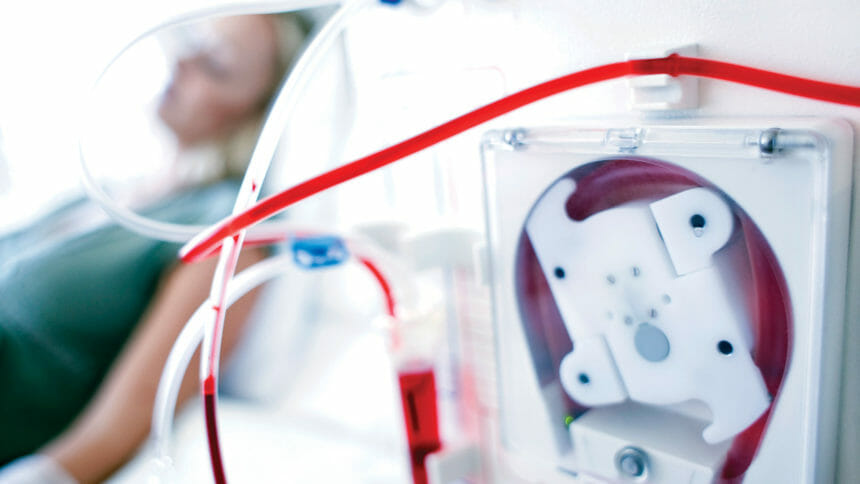
The growing trend to move dialysis into the home received two big boosts on Monday.
DaVita Kidney Care, one of the nation’s largest providers of dialysis services, disclosed it is expanding the use of the HomeChoice Claria automated peritoneal dialysis (ADP) system to its home dialysis program. The new system combines simplified ADP with remote patient monitoring , creating two-way digital communication between patients and their care teams.
“We know consistent communication between patients and care teams is crucial for building trust and confidence,” said Martin Schreiber, M.D., DaVita’s chief medical officer. “HomeChoice Claria bolsters connectivity between our care teams and patients, ultimately making their lives a little easier, which is what we aim to do in our home program.”
About 250 DaVita patients across the U.S. have been using HomeChoice Claria which provides more straightforward set-up and disconnection. The system uses Baxter International’s Sharesource remote patient management platform, which allows care teams to better manage patient care and make more timely decisions.
Three more dialysis facilities
Also on Monday, Plano, TX-based U.S. Renal Care announced the addition of three new dialysis facilities in southwest Florida, with two focusing exclusively on home-based care. USRC serves 26,000 patients in 350 locations.
“USRC is working to transform kidney care while focusing on becoming a comprehensive kidney care provider,” said Mary Dittrich, M.D., chief medical officer for USRC.
Federal initiative
Moving renal care into the home is part of an effort that began two years ago under an executive order by former President Donald Trump called Advancing American Kidney Health. The initiative was designed to facilitate more transplants and promote the development of new technologies revolutionizing dialysis.
Following the order, the Centers for Medicare and Medicaid Services has been pushing for more dialysis treatment at home in an effort to lower Medicare costs. In January, CMS launched the End Stage Renal Disease (ESRD) Treatment Choice Model (ETC), which aims to cut Medicare costs for dialysis treatment by $23 million over five years.
About 37 million Americans have chronic kidney disease; roughly 800,000 have ESRD requiring dialysis. Older Americans with ESRD comprise about 1% of Medicare patients, but account for about 7% of all Medicare spending.
In-home care offers dialysis patients more comfort and flexibility in designing personal care plans. Mathew Rivara, M.D., nephrologist at the University of Washington’s Kidney Research Institute, recently told McKnight’s Home Care Daily that strong provider/patient communication and care coordination can result in better outcomes for patients dialyzing at home.




